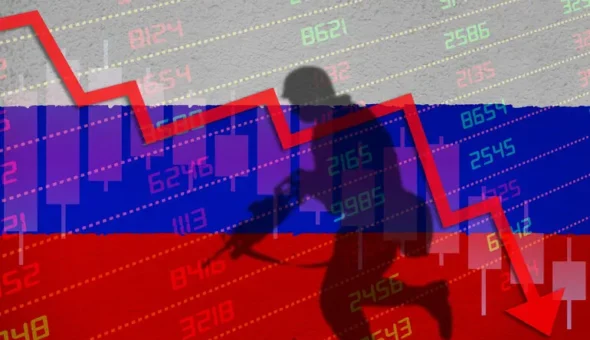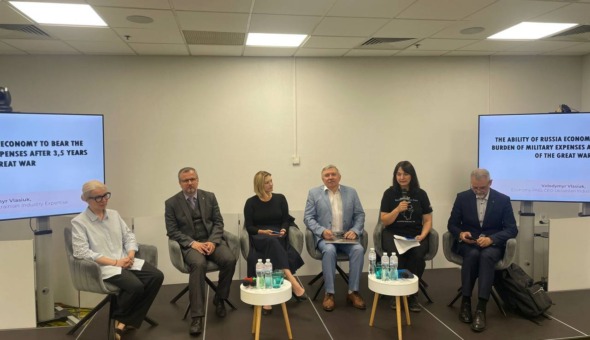
Due to the full-scale war, funding for culture has been significantly reduced. The state is forced to spend more on defense, so humanitarian spheres are fading into the background.
Last year, the budgets of the Ukrainian Cultural Foundation and the Ukrainian Book Institute, funds for heritage restoration and cultural service centers, and other development expenditures were allocated to the army.
The Restoring Ukraine Together project, implemented by the ANTS National Interest Advocacy Network with financial support from the European Union, analyzed how local budgets funded culture and the arts in 2022 and the previous ten years. This will help to emphasize wartime trends against the background of a longer historical perspective.
Note that the study focuses on cultural expenditures in the traditional sense, mainly on the maintenance of cultural institutions, artistic groups, and financing of artistic events. Here are the main findings.
The lack of money in the budget
Last year, funding for culture from the central government was halved. It amounted to $133 million in 2022, compared to $261 million in 2021 and $169 million in the pandemic year of 2020. The share of public finance for culture in the overall structure of expenditures fell to 0.16% last year, the lowest figure in the last ten years.
Local funding for the sector also decreased by a quarter: from $610 million in 2021 to $453 million in 2022. The decline is observed in all regions, most notably in the territories affected by the occupation and active hostilities: Luhansk, Donetsk, Kherson, Kharkiv, Mykolaiv, Zaporizhzhia, Zakarpattia, and Kyiv regions. Despite the fact that four regions nominally increased spending on culture by 1-5% in hryvnia, inflation ate up the slight increase.
The economy recovered rapidly after the pandemic. The government has allocated funds to stimulate demand through the eSupport program – in the winter of 2020/2021, Ukrainians spent UAH 1.8 billion on books, movie, theater, and concert tickets. State spending on culture increased by one and a half times in dollar terms, and local spending by 17%. But the war interrupted the economic recovery and dealt a second blow to an already weakened organism.

Decentralization and community resilience
Local funding for culture has decreased, but in relative terms, regions have allocated 3.01% of their expenditures to this area. This is the second best result in ten years. How to explain this phenomenon when the relative importance of the state budget for culture in the same year of 2022 was the smallest?
It can be assumed that the effect of decentralization is being felt: local governments have more powers and budget revenues, and thus the ability to allocate more funds to the needs of communities. But the cultural sector took time to adapt to the reform. Prior to decentralization, the government took into account the insufficient expenditures of local budgets on culture, education, and healthcare and compensated for them with intergovernmental transfers. In 2014, the share of culture in local funding reached its highest level in ten years – 3.08%. At the end of 2014, this norm was canceled. While education and healthcare in the regions still receive significant subventions and subsidies, culture on the ground was left without a compensatory mechanism. From then until 2019, the share of expenditures on culture was reduced while communities were building the capacity to fully fund it.
In 2020, the Ministry of Culture launched a reform of cultural funding in the regions. Instead of simply maintaining cultural institutions, the reform proposes to pay for specific cultural services provided by these institutions to citizens, and to link staff salaries to performance indicators and services provided.
As a result of decentralization, local authorities were granted the right to liquidate their cultural institutions, but only with the approval of the ministry and provided that the standards for providing the population with cultural services are met. In practice, local authorities often abused this power. Therefore, the idea of cultural service centers became a comprehensive element of the reform. Instead of outdated, unprofitable cultural infrastructure, modern community gathering spaces are offered that combine the functions of a library, club, cinema, and a place for creativity and cultural expression. After pilot projects of cultural service centers in seven ATCs, the state budget for 2022 provided a subvention of UAH 100 million for the construction of centers. Due to the war, the funds were allocated for defense.
In any case, in 2019, the share of culture in local budgets began to grow. This was also due to a number of soft mechanisms, such as the Academy of Cultural Leader educational and training program for cultural managers of ATCs, the Small Cities – Great Impressions competition for cultural and artistic projects, and the Culture. Regions” and “Small Cultural Capital” grant programs, attempts to integrate tourism and creative industries into local cultural strategies, and showcases of best cultural practices on the ground.
One way or another, since 2019, the share of culture in local budgets has begun to grow. This was caused by a number of soft mechanisms, such as the educational and training program “Cultural Leader Academy” for cultural managers of the ATC, the competition of cultural and artistic projects “Small cities—big impressions” and grant programs of the Ukrainian Cultural Fund “Culture. Regions” and “Small Cultural Capital”, attempts to integrate tourism and creative industries into local cultural strategies and the best cultural practices on the ground.
Decentralization bears fruit in proactive communities that are not afraid to take the initiative and rely on their strengths. They see culture as a source of development, a way to improve the quality of life of their citizens, attract tourists, and generate additional revenue.
In 2022, fifteen regions of Ukraine spent more than 3% of their budgets on culture and art. Almost 4% was spent in the Sumy region, and the lowest amount was spent in Kyiv (1.83%), although in absolute terms, Kyiv spent the most on culture – UAH 1.3 billion. Luhansk region is in the last place, with expenditures of UAH 132 million.
Despite the growing share of culture in local budgets, expenditures per capita per month decreased in 2022 and amounted to less than one dollar ($0.92), compared to $1.23 in 2021 and $1.05 in 2020. The highest expenditures per capita are in the Poltava ($1.55) and Chernihiv ($1.26) regions, and the lowest are in Donetsk ($0.21) and Luhansk ($0.16). The most rapid reduction in expenditures per capita in 2022 compared to 2021 was recorded in Kharkiv region (from $3.68 to $0.86) and Kyiv – from $4.19 to $1.19.

It is worth noting that the analysis of expenditures per capita is based on population data as of the beginning of 2022. Due to the influx of internally displaced persons, the data may be disproportionate and require further adjustments. It is likely to assume the following: if cultural spending in the regions that have received the most refugees has not increased, then there will be even less money per person. At the same time, the need to integrate new residents into the community to ensure social cohesion and comfortable public spaces is only growing – and this is a specific function of culture. Regions with many IDPs and relocated businesses show an increase in income, so it seems logical to proportionally increase spending on culture.
Last year, local budgets for culture were executed by 87%, which is higher than the overall level of local budget execution of 78%. Territorial communities financed two-thirds of local cultural expenditures. On average, in 2022, urban ATCs allocated UAH 16 million to the sector (Odesa, Kharkiv, and Dnipro regions are at the top), rural ATCs allocated UAH 4.5 million (Kyiv, Poltava, and Kirovohrad regions are among the leaders), and rural ATCs allocated UAH 2.5 million (Kyiv, Poltava, and Sumy regions are again at the top of the ranking). The average figure for cultural funding among all types of ATCs is UAH 6.7 million. At the same time, the lowest expenditures on culture from ATC budgets are in Zakarpattia Oblast (UAH 3 million), and the highest are in Lviv Oblast (UAH 11.7 million).
Challenges facing the regions
Even before 2022, local funding for culture faced a number of challenges, which were exacerbated by the war.
First, 60% of the funds are spent on salaries, while the salaries of employees in this sector are 26-30% lower than the average and amount to UAH 10.5-11 thousand; the war has only widened this gap.
Secondly, in 2022, the largest share of local budget expenditures was allocated to clubs (36%) and libraries, museums, and exhibitions (35%); less than one percent of funding went to cinemas and nature reserves. Despite the extensive network of cultural institutions, its quality is unsatisfactory. Capital expenditures in 2022 were almost twice as high as planned (4.5% vs. 2.6%) due to the restoration of cultural infrastructure destroyed by the russians. However, this is still an insignificant amount, even though investments in capital expenditures in the cultural sector and creative industries have a high return on investment. There is also a lack of funds to replenish library collections; the Ukrainian Book Institute has called on libraries and readers to demand that local authorities allocate funds for the purchase of books. Not to mention the costs of changes in cultural governance, modern trends, and cultural practices.
Third, regional inequalities are deepening. While the reconstruction of the liberated territories may lead to a short-term surge in cultural spending, proximity to the front prioritizes defense funding, and the outflow of people from the East and South makes investment in the arts unreasonable.

Where are we going?
In recent years, the share of culture in local budgets has been gradually increasing due to decentralization. If we draw a portrait of regional expenditures on culture, communities mostly spend money on salaries for club and library staff, which, however, remain low. But even this funding is threatened by the war.
UNESCO notes that public funding for culture and the creative industries is declining worldwide. The militarization of economies makes it difficult to find sufficient support for the sector unless culture finds a way to join the political mainstream: security, defense, climate, and energy. Thanks to local budget expenditures, Ukraine has not lagged behind: in 2021, EU countries spent 1% of their consolidated budget on culture, while in Ukraine this figure was 1.3% (in 2022 it was halved to 0.6%).
During the war, culture found itself in a Procrustean bed. On the one hand, the ideological and national liberation character of the war created a demand for new cultural policies: in the field of the Ukrainian language, historical memory, heritage, creative industries, and media. On the other hand, spending money on culture in times of war can be perceived as an inappropriate luxury “out of time.” This was demonstrated by the heated public debate about the completion of the Holodomor Genocide Museum and the petition calling for a limit on non-critical spending.
Compared to other sectors, culture is in the middle position. The real reduction in consolidated budget expenditures on spiritual and physical development amounted to -39%, which is less than housing and communal services (-43%), support for economic activity (-58%), and environmental protection (-61%), but much more than education (-27%), health care (-17%), social protection, and social security (-2%).
The analysis doesn’t take into account donor funding, although foreign grants covered 22% of budget revenues in 2022. In the field of culture, international assistance is mostly off-budget and aimed at supporting artists and their projects.
The EU’s Creative Europe, Culture Moves Europe, House of Europe, and EU4Culture programs, the USAID Competitive Economy program, UNESCO, the International Alliance for the Protection of Heritage in Conflict Areas, and other foreign charities and private organizations provide grants, scholarships, and assistance for the restoration of creative businesses and the protection of heritage. There are isolated cases of rebuilding cultural infrastructure at the expense of foreign donors. International cultural assistance supports artists, allows Ukrainians to showcase their country abroad, and is mostly project-based, but systemic cultural reforms are up to Ukraine.
The decentralization of communities has contributed to attention to local peculiarities, flexible responses to the challenges of war, and investments in local needs. In some places, it is the restoration of damaged facilities; in others, it is programming for IDPs and cultural integration. However, there are common principles that should guide funding: rebuilding on the principle of “better than before,” inclusiveness and barrier-free access, training in new skills, support for horizontal formats of cultural participation, maximum involvement of different categories of the population, such as veterans and IDPs, development of creative industries, and modern forms of cultural expression. Communities should work on international partnerships, as they help to attract funding and spread Ukrainian narratives through cultural diplomacy. Experience shows that communication support for budget expenditures is important, clearly showing the sources of funds and reporting, the problem the event solves, and its impact on community residents.
Every hryvnia comes at a high price, so cultural managers must demonstrate that spending is transparent, honest, appropriate, and contributes to Ukraine’s victory.
Author:
Luiza Moroz is the head of the Creative Industries Department at the Ukrainian Center for Cultural Research and a researcher in the field of culture.
This publication has been funded by the European Union. Its contents are the sole responsibility of the author and do not necessarily reflect the views of the European Union.



